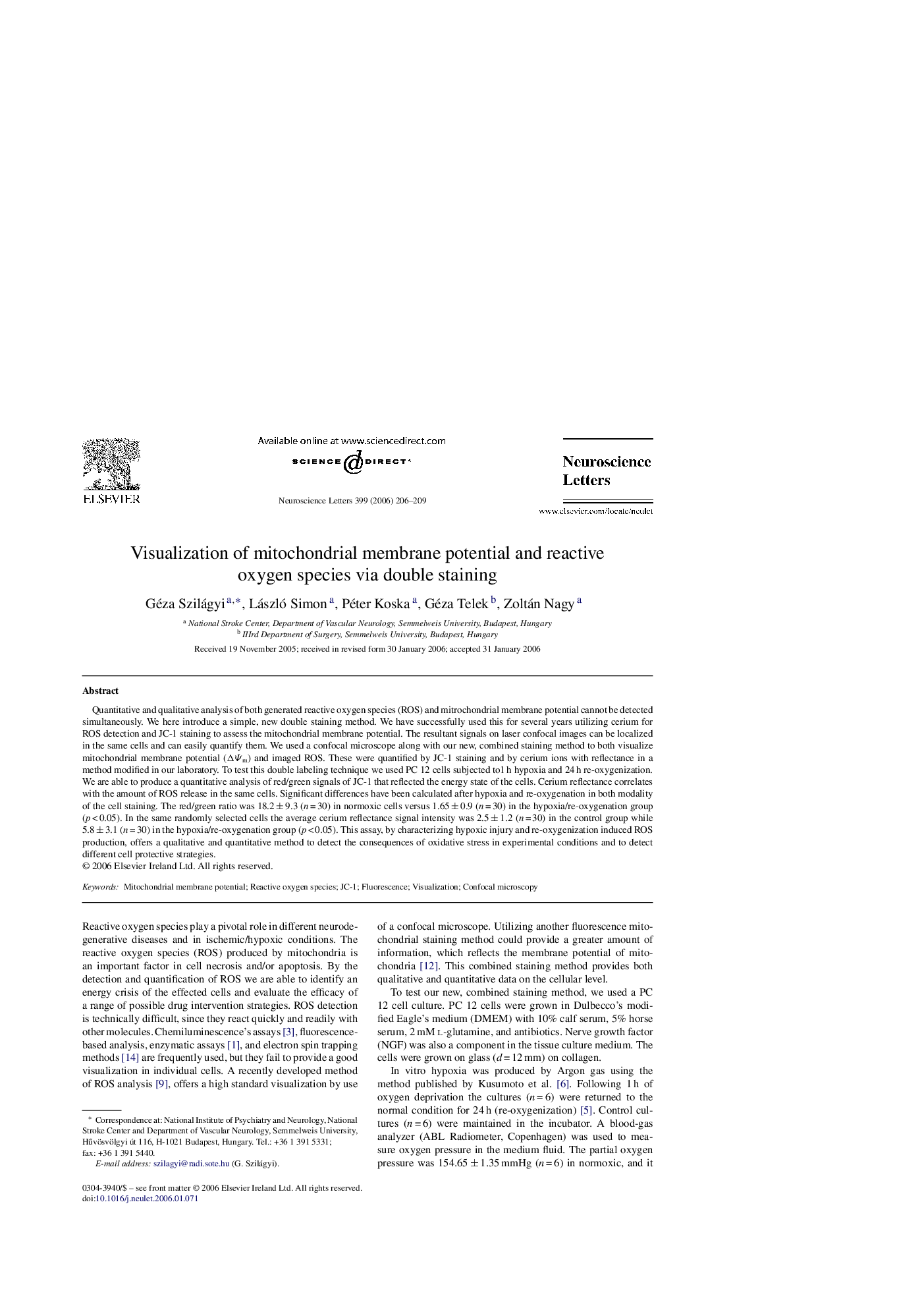| Article ID | Journal | Published Year | Pages | File Type |
|---|---|---|---|---|
| 4350766 | Neuroscience Letters | 2006 | 4 Pages |
Quantitative and qualitative analysis of both generated reactive oxygen species (ROS) and mitrochondrial membrane potential cannot be detected simultaneously. We here introduce a simple, new double staining method. We have successfully used this for several years utilizing cerium for ROS detection and JC-1 staining to assess the mitochondrial membrane potential. The resultant signals on laser confocal images can be localized in the same cells and can easily quantify them. We used a confocal microscope along with our new, combined staining method to both visualize mitochondrial membrane potential (ΔΨm) and imaged ROS. These were quantified by JC-1 staining and by cerium ions with reflectance in a method modified in our laboratory. To test this double labeling technique we used PC 12 cells subjected to1 h hypoxia and 24 h re-oxygenization. We are able to produce a quantitative analysis of red/green signals of JC-1 that reflected the energy state of the cells. Cerium reflectance correlates with the amount of ROS release in the same cells. Significant differences have been calculated after hypoxia and re-oxygenation in both modality of the cell staining. The red/green ratio was 18.2 ± 9.3 (n = 30) in normoxic cells versus 1.65 ± 0.9 (n = 30) in the hypoxia/re-oxygenation group (p < 0.05). In the same randomly selected cells the average cerium reflectance signal intensity was 2.5 ± 1.2 (n = 30) in the control group while 5.8 ± 3.1 (n = 30) in the hypoxia/re-oxygenation group (p < 0.05). This assay, by characterizing hypoxic injury and re-oxygenization induced ROS production, offers a qualitative and quantitative method to detect the consequences of oxidative stress in experimental conditions and to detect different cell protective strategies.
